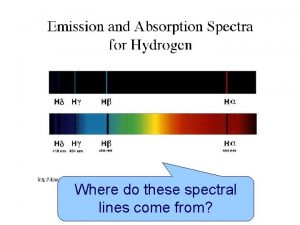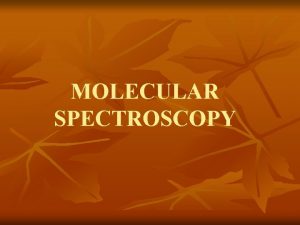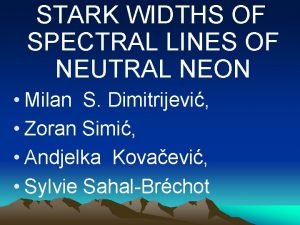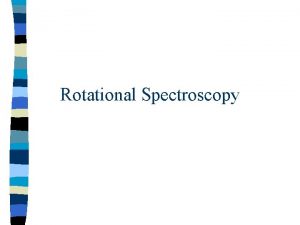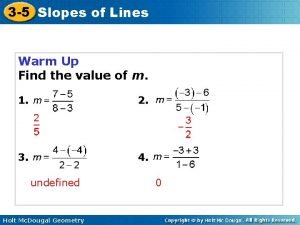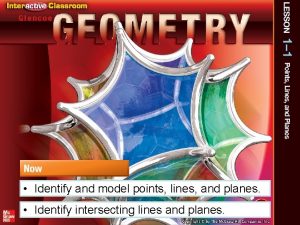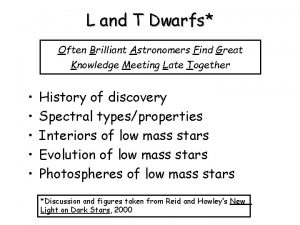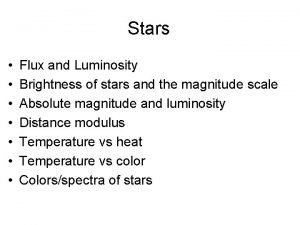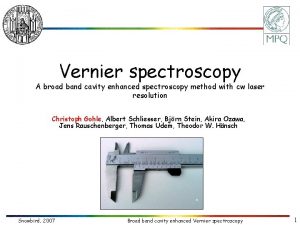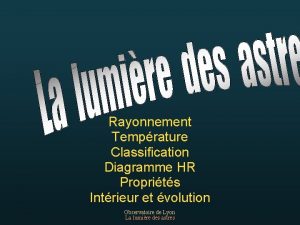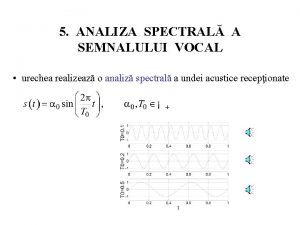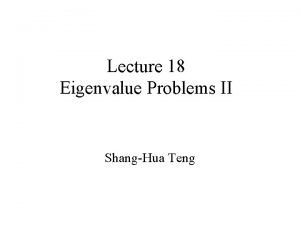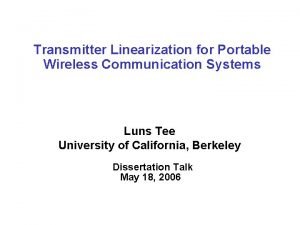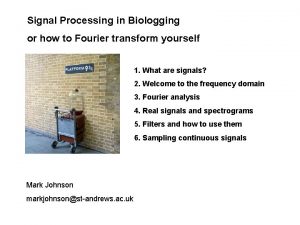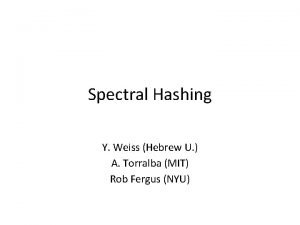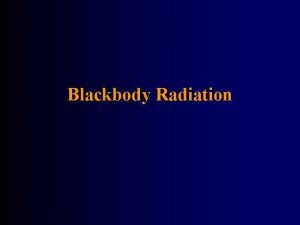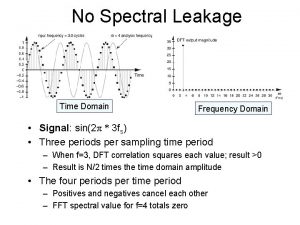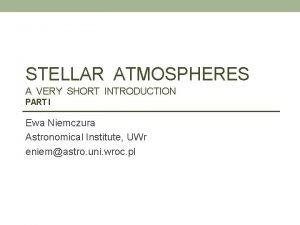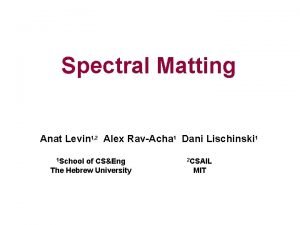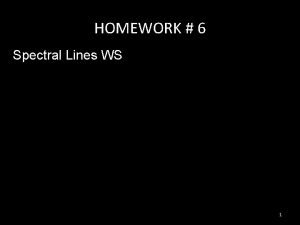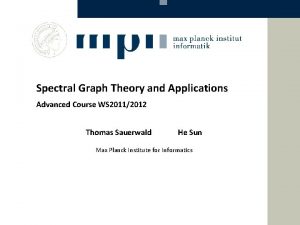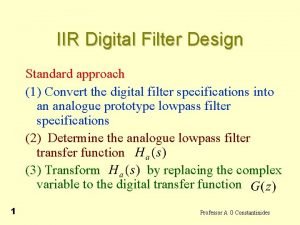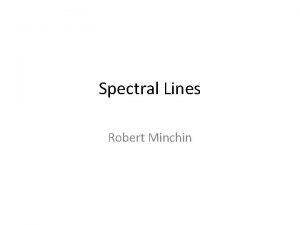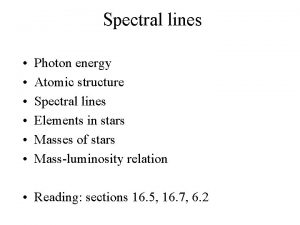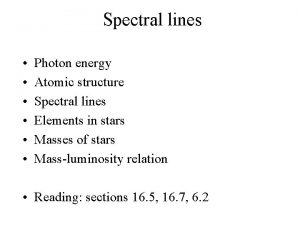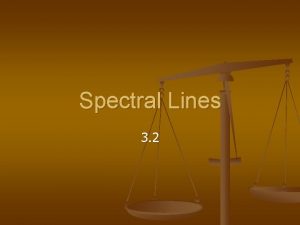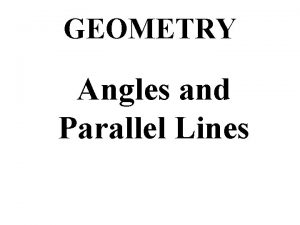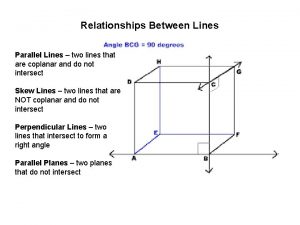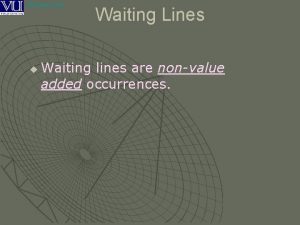HOMEWORK 6 Spectral Lines WS 1 Aim 6













































![73 [1] Allow 1 credit. Acceptable responses include, but are not limited to: When 73 [1] Allow 1 credit. Acceptable responses include, but are not limited to: When](https://slidetodoc.com/presentation_image_h/94a534d9d9a3303f9a0772b6b6db713d/image-46.jpg)
- Slides: 46

HOMEWORK # 6 Spectral Lines WS 1

Aim # 6: How can we identify an unknown element? 2

http: //www. mhhe. com/physsci/chemistry/anim ations/chang_7 e_esp/pem 1 s 3_1. swf 3

4

1 Ultra Violet 2 Visible range 3 5

6

1. When electron falls to: n = 1 level gives UV Range (Lyman Series) n = 2 level gives Visible Range (Balmer Series) n = 3, 4 or 5 levels gives IR Range (Paschen Series)

2. Electromagnetic Spectrum 8

The electromagnetic spectrum includes all the wavelengths of radiant energy from short gamma rays to long radio waves. 9

3. The Visible Spectrum • The visible spectrum is that part of the electromagnetic spectrum that is visible to the eye, generally with wavelengths ranging between about 400 and 700 nm. 10

4. Spectroscope An instrument that breaks light into colored bands

Line Spectra for Hydrogen

Line Spectra for Mercury, and Neon Hg Ne

5. Bright-Line Spectra or Fingerprints of Elements: Each element has its own distinct line spectra. Helium line spectra 14

Spectrum Excited State Paschen Series Balmer Series Excited State n=4 UV n=3 Excited State unstable and drops back down Excited State n=2 But only as far as n = 2 this time • Energy released as a photon • Frequency proportional to energy drop V i s i b l e IR Lyman Series Ground State n=1

6. Type of Spectrum A. Continuous Spectrum B. Bright line spectrum Absorption or dark line spectrum. 16

A. Continuous Spectrum: We see all the colors • Solids, liquids, and dense gases emit light of all wavelengths, without any gaps. 17

B. Bright line spectrum: selected colors 18

If there is a source of light behind it, a thin gas will absorb light of the same wavelengths it emits. We call this an absorption or dark line spectrum. 19

Origin of Continuum, Emission, and Absorption Spectra The origins of these three types of spectra are illustrated in the following figure. 20

21

7. Flame Test • Every element absorbs and emits different amounts of energy (different colors).

Lithium Potassium Copper Calcium

"Flame spectrum" of Na Scale: wavelength in nm 24

"Flame spectrum" of Calcium (Ca). Scale: wavelength in nm. 25

Colors of Various Gases

END OF THE SHOW 27

PRACTICE , PRACTICE MAKES YOU PERFECT!! 28

1. The characteristic bright-line spectrum of sodium is produced when its electrons (1) return to lower energy levels (2) jump to higher energy levels (3) are lost by the neutral atoms (4) are gained by the neutral atoms 29

2. Draw four vertical lines showing the wavelengths of the spectral lines for the Balmer Series of hydrogen: 410. 2, 434. 4, 486. 1, and 656. 3 nm. 30

The diagram shows the characteristic spectral line patterns of four elements. Also shown are spectral lines produced by an unknown substance. Which pair of elements is present in the unknown? 1. lithium and sodium 3. lithium and helium 2. sodium and hydrogen 4. helium and hydrogen 31

August 2008 32

Base your answers to questions 66 through 69 on the information below. In a laboratory, a glass tube is filled with hydrogen gas at a very low pressure. When a scientist applies a high voltage between metal electrodes in the tube, light is emitted. The scientist analyzes the light with a spectroscope and observes four distinct spectral lines. The table below gives the color, frequency, and energy for each of the four spectral lines. The unit for frequency is hertz, Hz. 33

34

35

66. On the grid in your answer booklet, plot the data from the data table for frequency and energy. Circle and connect the points, including the point (0, 0) that has already been plotted and circled for you. [1] 36

67. A spectral line in the infrared region of the spectrum of hydrogen has a frequency of 2. 3 × 1014 hertz. Using your graph, estimate the energy associated with this spectral line. [1] 37

68. Explain, in terms of subatomic particles and energy states, why light is emitted by the hydrogen gas. [1] 38

69. Identify one condition not mentioned in the passage, under which hydrogen gas behaves most like an ideal gas. [1] 39

June 2008 40

31. The wave-mechanical model of the atom is required to explain the (1) mass number and atomic number of an atom (2) organization of atoms in a crystal (3) radioactive nature of some atoms (4) spectra of elements with multielectron atoms 41

The Balmer series refers to the visible bright lines in the spectrum produced by hydrogen atoms. The color and wavelength of each line in this series are given in the table below. 42

72. On the diagram in your answer booklet, draw four vertical lines to represent the Balmer series. [1] 43

72. Allow 1 credit for all four lines drawn correctly ± 0. 3 division. The lines can be drawn above, through, or below the scale. 44

73. Explain, in terms of both subatomic particles and energy states, how the Balmer series is produced. [1] 45
![73 1 Allow 1 credit Acceptable responses include but are not limited to When 73 [1] Allow 1 credit. Acceptable responses include, but are not limited to: When](https://slidetodoc.com/presentation_image_h/94a534d9d9a3303f9a0772b6b6db713d/image-46.jpg)
73 [1] Allow 1 credit. Acceptable responses include, but are not limited to: When the electron in an excited hydrogen atom returns from a higher energy state to a lower energy state, a specific amount of energy is emitted. Light is emitted when the excited electron drops from a higher electron shell to a lower electron shell. 46
 Atomic spectral lines
Atomic spectral lines Application of rotational spectroscopy
Application of rotational spectroscopy Rotational spectral lines
Rotational spectral lines Neon spectral lines
Neon spectral lines Selection rule for raman spectroscopy
Selection rule for raman spectroscopy Homework oh homework i hate you you stink
Homework oh homework i hate you you stink Homework oh homework i hate you you stink
Homework oh homework i hate you you stink Homework oh homework i hate you you stink
Homework oh homework i hate you you stink Homework oh homework i hate you you stink
Homework oh homework i hate you you stink Literal language examples
Literal language examples Jack prelutsky homework oh homework
Jack prelutsky homework oh homework How many planes appear in the figure?
How many planes appear in the figure? A belt fits tightly around two pulleys
A belt fits tightly around two pulleys 3-5 slopes of lines
3-5 slopes of lines 3-3 homework slopes of lines
3-3 homework slopes of lines How many planes appear in the figure
How many planes appear in the figure Lesson 3-5 proving lines parallel answers
Lesson 3-5 proving lines parallel answers Homework 3 proving lines parallel
Homework 3 proving lines parallel Unit 3 test parallel and perpendicular lines
Unit 3 test parallel and perpendicular lines Spectral normalization for generative adversarial networks
Spectral normalization for generative adversarial networks Spectral classes
Spectral classes Luminosity and temperature equation
Luminosity and temperature equation Warped cassette
Warped cassette Vernier spectral analysis
Vernier spectral analysis Spectral clustering
Spectral clustering Domaine spectral
Domaine spectral Spectral unmixing
Spectral unmixing Shang-hua teng
Shang-hua teng Spectral regrowth
Spectral regrowth Spectral leakage
Spectral leakage Rms spectral width
Rms spectral width Spectral characteristics of angle modulated signals
Spectral characteristics of angle modulated signals Spectral hashing
Spectral hashing Spectral signatures
Spectral signatures Spectral class
Spectral class Value at risk formula
Value at risk formula Spectral leakage
Spectral leakage Spectral clustering
Spectral clustering Spectral classification
Spectral classification Spectral matting
Spectral matting Yagami doc
Yagami doc Global spectral model
Global spectral model Potassium lithium
Potassium lithium Adobe audition for dummies
Adobe audition for dummies Analytical spectral devices
Analytical spectral devices Spectral graph theory applications
Spectral graph theory applications Spectral transformation of iir filters
Spectral transformation of iir filters
